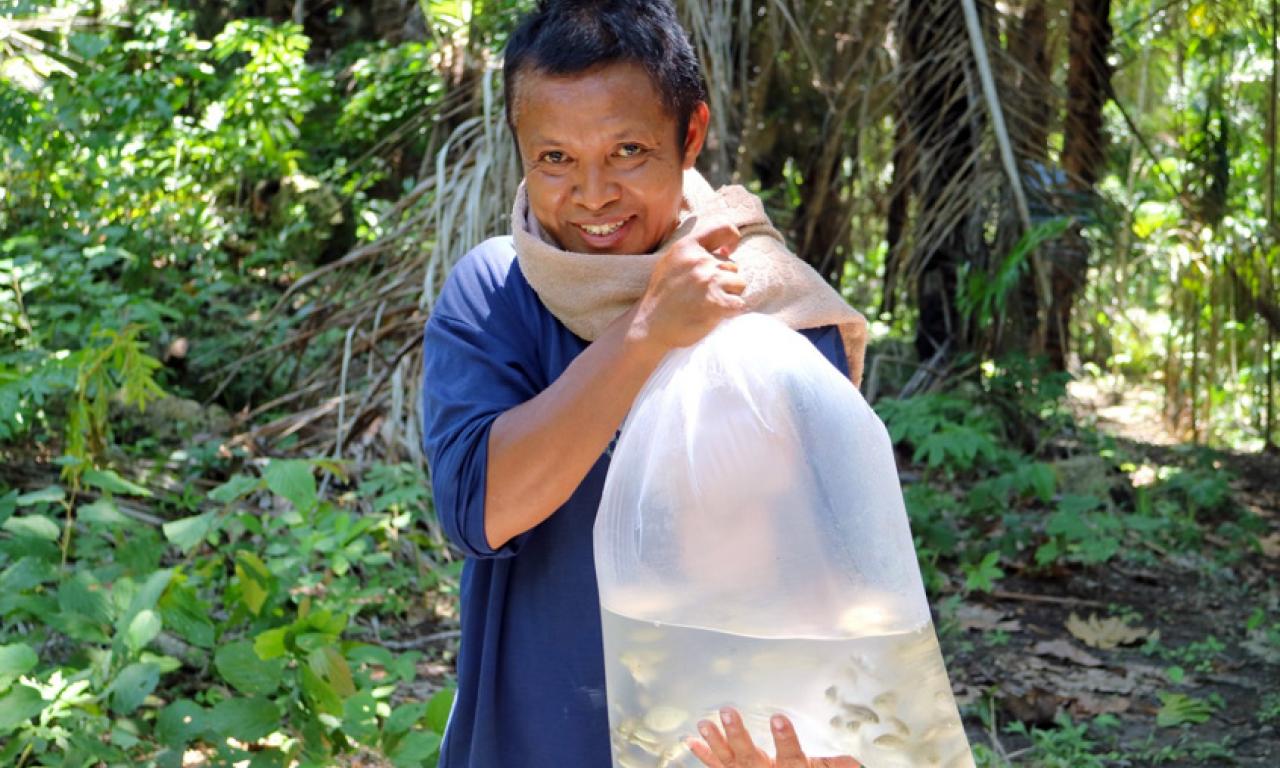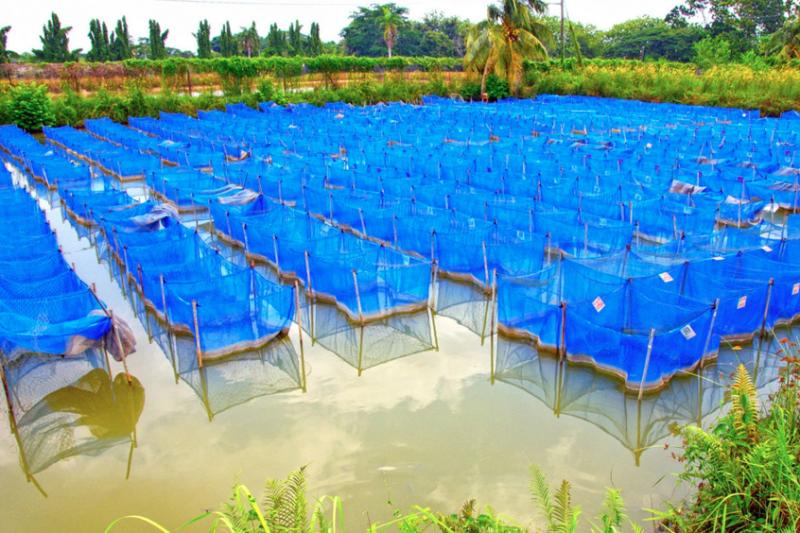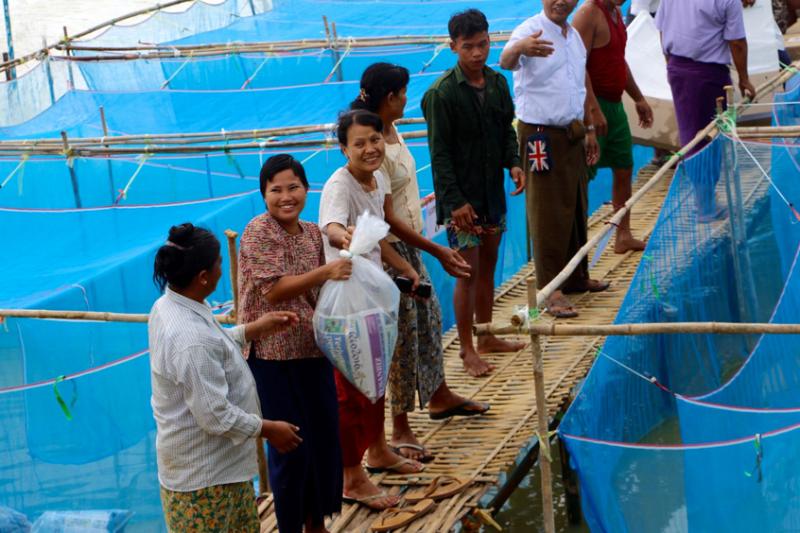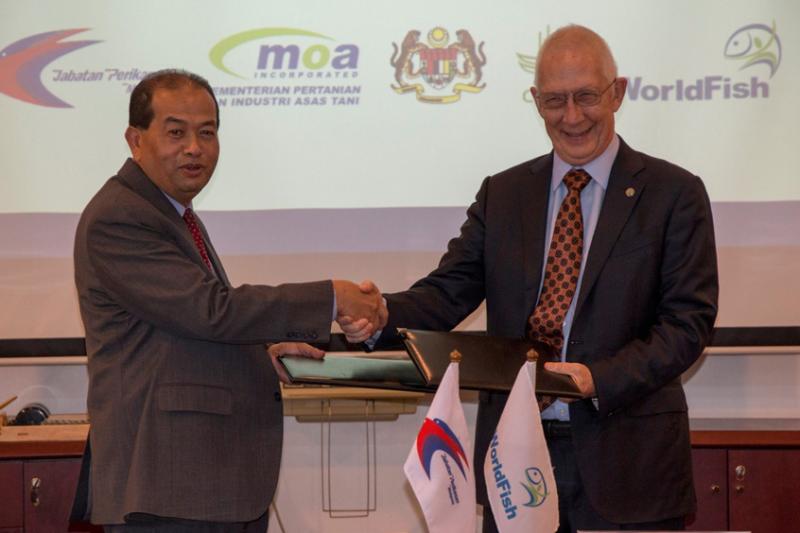
At WorldFish, the long-running selective breeding program for the Genetically Improved Farmed Tilapia (GIFT) strain is fundamental to our efforts to improve livelihoods and food security in Asia, the Pacific and Africa by improving aquaculture and fisheries.
Recommended publications
- Genetically Improved Farmed Tilapia
- Performance of the Genetically Improved Farmed Tilapia (GIFT) strain over ten generations of selection in Malaysia
At WorldFish, the long-running selective breeding program for the Genetically Improved Farmed Tilapia (GIFT) strain is fundamental to our efforts to improve livelihoods and food security in Asia, the Pacific and Africa by improving aquaculture and fisheries.
The development of faster-growing tilapia species helps farmers increase their productivity, which is especially beneficial for poor, small-scale producers in developing countries who depend on aquaculture for food, income and nutrition yet often have low yields.
In 2016, WorldFish continued this vital GIFT breeding work, funded by the European Union, highlighted by the development of the 15th generation of GIFT and the first-ever distribution of GIFT fry to Myanmar.
The 15th generation of GIFT tilapia
GIFT tilapia is an improved strain of tilapia that grows faster than other local varieties. It was first developed by WorldFish and partners in 1988.
In 2016, WorldFish developed the 15th generation, which is estimated to have 5.7% faster growth than the 14th generation. On average, each new generation of GIFT has 5-10% faster growth than the previous generation. These genetic gains are cumulative and permanent.
Typically, because a single female fish lays thousands of eggs and fish mature quickly, it only takes one year to produce a new generation. This is relatively quick when compared to livestock, where because a female cow only produces one or two calves at a time, it takes around six years to produce a single generation.
Breeding of the 15th generation of GIFT started in December 2015, when 80 groups were set up for mating, aiming to produce at least 160 full-sibling families. After three months of mating, a total of 165 full-sibling families were produced – 157 families for the selection line and 8 families for the unselected control line.
The fry were nursed for two months, and then individually tagged when they reached an average size of 5 grams. The grow-out period was about 130 days on average. In the first week of October 2016, all the fish were harvested and their measurements recorded.

After the data was analyzed, a mating list was produced in early November. All the potential breeders were collected and conditioned separately by sex in November 2016. After two weeks of conditioning – when male and female fish are moved into separate net-cages, fed well and checked to be ready for mating – the new reproduction cycle to produce the 16th generation will be initiated in December 2016, lasting for two to two-and-a-half months.
Disseminating GIFT seed to India and Myanmar
The GIFT breeding program is based at a research station provided by the Malaysian Department of Fisheries in Jitra, Malaysia, from where WorldFish also distributes fry to other countries and partner organizations. GIFT is considered an international public good and is available to any country that agrees to responsibly use the germplasm they receive.
In March 2016, WorldFish sent 1200 fry (40 full-sib families with 30 fry each) to the Rajiv Gandhi Center for Aquaculture (RGCA) in India to supplement that center’s existing GIFT breeding nucleus.
Five months later, in August 2016, a total of 3200 fry from eight cohorts (400 fry per cohort) were sent to the Department of Fisheries in Myanmar. This is the first time WorldFish has disseminated GIFT fry to Myanmar, which will be used to diversify and improve the genetic quality of tilapia in the country.

These transfers were carried out in an environmentally and socially responsible way according to international accepted guidelines for introductions and transfers (ICES 1994). This resulted in more than 80% of both batches of fry surviving the journeys.
Expansion of Jitra research facilities
Since 2015, the Department of Fisheries has been upgrading the Jitra Aquaculture Extension Center with new facilities and improved bio-security to enable expansion of the GIFT program.
This is part of the research collaboration between the Department of Fisheries (DoF) Malaysia and WorldFish, which aims to promote the sustainable development of aquaculture and fisheries in Malaysia and was officially launched in June 2016.

In the first quarter of 2016, two stand-alone incubation rooms were completed – one for WorldFish’s research breeding programs and the other for DoF’s own fry production.
As part of the collaboration, the department granted WorldFish with an additional 16 earthen ponds (8 x 1000m2 and 8 x 500m2 ponds) in October, adding to our existing 18 ponds. These newly-granted ponds, which replicate commercial and farm-like conditions, will be used for large-scale experiments and production purposes.
Next year, WorldFish will use these ponds to conduct a genotype by interaction experiment in partnership with Wageningen University from the Netherlands. This research aims to determine if the absence of an aerator, a tool used to add oxygen to water but that is often not used in developing countries, limits the growth rate of GIFT.
Besides the research at Jitra, WorldFish also conducted two experiments in 2016 at its headquarters in Penang. These experiments, completed in August 2016, used GIFT to look at (1) feed efficiency (in collaboration with CIRAD, France) and (2) kin recognition (in collaboration with Wageningen University, the Netherlands). The results from these two experiments are expected to be written up and published in scientific journals in 2017.
WorldFish and partners will continue this important fish breeding work in 2017 and beyond to produce better strains of fish, enabling small-scale farmers to boost their productivity and get a greater return on their investment.